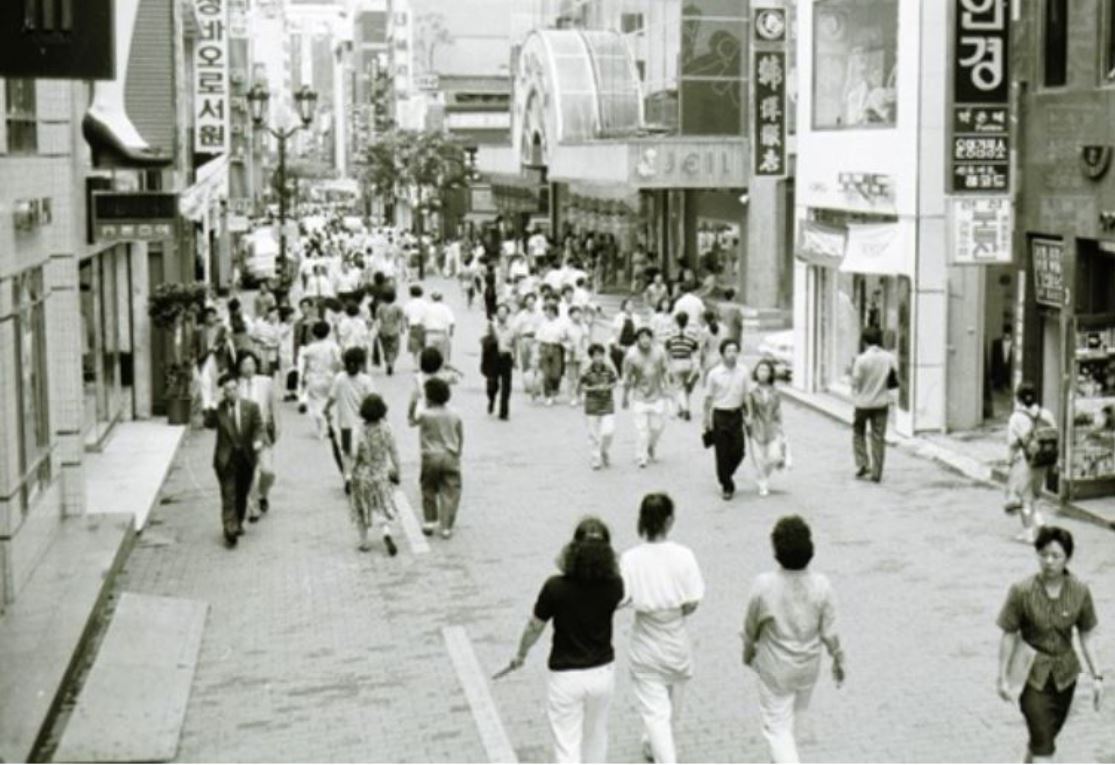[News Focus] Population slides in 5 major cities in Korea
By Kim Yon-sePublished : Aug. 11, 2019 - 17:01
SEJONG -- The demographic structure is rapidly changing in South Korea, reversing from the situation in the 1970-80s, when more people relocated to Seoul or metropolitan cities such as Busan, Daegu and Gwangju.
Government data showed that most of the big cities nationwide saw their population decline over the past five years, following the farming population drops in provincial areas for decades.
The nation’s total population came to 51.84 million as of July 2019, inching up 1.1 percent from 51.25 five years ago in July 2014, according to the Ministry of Interior and Safety.
Big cities have led the sharp slowdown in population growth amid record-low fertility rates and growing number of singe-member households among people in their 30s and 40s.
The number of residents in Seoul fell by 370,000, or 3.6 percent, over the corresponding period from 10.12 million to 9.75 million. The capital city topped the list in population decrease among 17 major cities (eight) and provinces (nine).
Government data showed that most of the big cities nationwide saw their population decline over the past five years, following the farming population drops in provincial areas for decades.
The nation’s total population came to 51.84 million as of July 2019, inching up 1.1 percent from 51.25 five years ago in July 2014, according to the Ministry of Interior and Safety.
Big cities have led the sharp slowdown in population growth amid record-low fertility rates and growing number of singe-member households among people in their 30s and 40s.
The number of residents in Seoul fell by 370,000, or 3.6 percent, over the corresponding period from 10.12 million to 9.75 million. The capital city topped the list in population decrease among 17 major cities (eight) and provinces (nine).

Busan, the nation’s second-largest city, followed suit by posting a 2.8 percent population drop, or 100,000, from 3.52 million to 3.42 million.
Daegu, the fourth-largest city, and Daejeon (fifth) saw their population fall by 2 percent and 3.2 percent, respectively, to 2.44 million and 1.48 million.
“The population of Seoul is estimated to have fallen to the level of the mid-1980s after peaking at 10.3 million in the early 2010s,” said a demography researcher in Seoul. “Many Seoul citizens have moved to new residential towns in Gyeonggi Province and Incheon.”
He also said that a drop in Daejeon’s population was attributable to movement of a portion of its citizens to neighboring Sejong administrative-oriented city, which was created in July 2012.
Gwangju (sixth-largest) and Ulsan recorded a 1.3 percent and 0.8 percent decline, respectively, while population increase is seen only in two -- Incheon and Sejong -- of the eight major cities.
While Incheon (third-largest) posted a 2 percent growth to 2.95 million since 2014, the number of residents in Sejong jumped 150 percent from 132,000 to 330,000.
On the basis of six biggest cities in the nation, five -- Seoul, Busan, Daegu, Daejeon and Gwangju -- recorded a drop, excepting for Incheon.
The population drop is also seen in four out of the nine provinces, while five -- Gyeonggi, South Chungcheong, North Chungcheong, South Gyeongsang and Jeju -- posted an increase.
The Honam region initiated the fall, alongside Gwangu. The number of residents in South and North Jeolla provinces decreased by 40,000 (2.1 percent) and 50,000 (2.6 percent), respectively, to 1.86 million and 1.82 million over the same period.
North Gyeongsang and Gangwon provinces recorded a 1.1 percent and 0.03 percent drop to 2.66 million and 1.54 million.

Collectively, 10 out of the 17 major cities and provinces underwent a population fall.
In contrast, the number of residents in Gyeonggi Province and Incheon is continuously growing amid high apartment prices in Seoul.
The population of Gyeonggi Province came to 13.17 million last month, up 860,000, or 6.9 percent in five years from 12.31 million in July 2014.
Suwon City topped the list in Gyeonggi region with its population of 1.19 million, trailed by Yongin with 1.052 million and Goyang with 1.051 million. The figures are comparable to the number of residents in Ulsan, one the nation’s six metropolitan cities, where 1.15 million people were residing as of July.
Among other big cities in Gyeonggi Province are Seongnam at 946,000, Bucheon at 835,000, Hwaseong at 795,000, Namyangju with 693,000 and Gimpo with 432,000.
A research analyst in Seoul, cited ministry data, which shows that “three out of every 10 Koreans are residing in Gyeonggi Province or Incheon (16.12 million out of the total 51.84 million).”
Meanwhile, data from Statistics Korea estimates that the total population will start falling in 2029 after peaking at 51.94 million in 2028.
Some experts forecast the population decline will begin earlier than expected, citing the nation’s sliding marriage rate since 2011.
By Kim Yon-se (kys@heraldcorp.com)








![[Graphic News] More Koreans say they plan long-distance trips this year](http://res.heraldm.com/phpwas/restmb_idxmake.php?idx=644&simg=/content/image/2024/04/17/20240417050828_0.gif&u=)
![[KH Explains] Hyundai's full hybrid edge to pay off amid slow transition to pure EVs](http://res.heraldm.com/phpwas/restmb_idxmake.php?idx=644&simg=/content/image/2024/04/18/20240418050645_0.jpg&u=20240419100350)





![[From the Scene] Monks, Buddhists hail return of remains of Buddhas](http://res.heraldm.com/phpwas/restmb_idxmake.php?idx=652&simg=/content/image/2024/04/19/20240419050617_0.jpg&u=20240419175937)

![[KH Explains] Hyundai's full hybrid edge to pay off amid slow transition to pure EVs](http://res.heraldm.com/phpwas/restmb_idxmake.php?idx=652&simg=/content/image/2024/04/18/20240418050645_0.jpg&u=20240419100350)

![[Today’s K-pop] Illit drops debut single remix](http://res.heraldm.com/phpwas/restmb_idxmake.php?idx=642&simg=/content/image/2024/04/19/20240419050612_0.jpg&u=)